|
The above open workout is the first part of a open workout that in actually competition finished with a max C&J. I removed that part from this workout because I don’t think regularly lifting to maximum under fatigue is safe or necessary for general population.
The first part of the workout though which is above, is a very grip intensive workout. Especially for athletes who have a higher level of fitness, the grip will fail first or hold the athletes up. Performing workouts similar to this in preparation for competition or the open is a good idea because quite often a workout that will be tested is very grip intensive
0 Comments
The workout above is very simple couplet, it is basically Fran with a twist instead of doing Pull Up the gymnastic movement paired with thrusters is T2B.
The changes I would expect to happen with this change are the workout will take longer for an athlete who is efficient at pull ups because the cycle rate of t2b is much slower. Also I’d expect most athletes to be able to complete the thrusters unbroken with more ease because the t2b being much less taxing on the arms than t2b. Personally I’d prefer this variation because I’d anticipate it to be much less painful and hopefully not leave you with “Fran lung” 8/21/2021 WORKOUT
I like to program long team workouts on a weekly basis at CrossFit gyms. One common thing I implement into these workouts is a an ascending weight ladder with the barbell movement that is within the workout. The main reason I like to implement this is it gives people the opportunity to gradually lift heavier under fatigue as the workout goes on. I find it smartest to implement this in a team workout because having a partner forces you to rest, so the work being performed stays at a higher quality and is performed at a higher intensity. Plus having a partner provides the extra motivation to push harder then you normally would if you were doing the workout on your own because someone is relying on your performance. Lastly, workouts like this touch on developing strength and building capacity at heavier loads, which carries over well to open workouts that have ascending weight ladders 8/20/2021 WORKOUT
I like this workout areas, it tests athletes capacity in a few different ways very well, pending the ability level and how you approach it. First, you can look at it as a burpee efficiency/capacity workout. This would only be the case though if you were to be using the Cindy portion of the workout as your “recovery”. This workout would be great for burpee capacity because the combination of push ups one minute then burpees the next would tax your horizontal pushing muscles a lot. Forcing you to use an efficient technique to be able to complete them all. Second, if you are a less advanced athlete to where the Cindy portion of the workout would not be a rest. The challenge would then become completing that every round and not spiking your heart rate to much during the burpees (however many you choose to do). Keeping your heart rate low during the burpee will be important for being able to keep up your cycle rate to finish all 30 reps of Cindy every minute Single modal workouts are not often programmed at many CrossFit gyms. I think this is because they do not help the individual develop a wide variety of skills like what CrossFit preaches. Instead it tests your capacity solely in one movement domain, either weightlifting, barbell, or gymnastics.
Single modal workouts are most commonly programmed with only the barbell. Some examples are the open workouts above, Grace, and Isabel. These are very effective tools for training individuals whose limitation is the barbell because it forces them to grow comfortable with it and continue to move it under fatigue. Also the loading is just heavy enough to where they must be efficient with the movement, to be able to complete all reps in timely manner. I do not think it be wise to program single modal workouts often because of the small amount of time they are tested in competition, but from time to time they are a good measuring stick for someone trying to improve their capacity in a certain domain A common way I approach strength work leading up to the CrossFit open or some sort of CrossFit competition is I have athletes build up to a single heavy set for the day, then cut them off after that. The reason why I do this is it keeps volume low, but maintains intensity so the athlete is not losing any strength while they increase the volume of conditioning in there training. Building up to a heavy also removes the psychological stress of having to hit certain percents on a daily basis, which probably won’t always be the case when strength work isn’t the focus of the training. This provides a more RPE based prescription, so they are going off feel. This works really with veteran athletes who know there body well.
When building to a heavy set this means it shouldn’t be a complete max effort. It should be at 80-90% exertion pending the RPE prescription attached to it. For example if you are building to a heavy double it should be something you can definitely hit for 3 and maybe 4 reps on a good day. Or it would be 10ish% lower then what you think you could@hit for a max double. This open test is one of my least favorite open tests that have been performed. The reason being is it is very one dimensional because it only test the athletes capability in the snatch. This workout goes against what CrossFit is all about, being able to sufficiently perform a multitude of skills at a high intensity.
The positive of the workout is it does require a solid level of conditioning and muscle endurance specifically in the snatch movement pattern. This is because all of the reps that the athlete is required to perform, but the limiting factor for everyone is their ability to demonstrate their strength in the snatch under fatigue. A workout they did more recently in the open that I prefer over this one os the snatch ladder combined with chest to bar pull ups. I think this is a much better test because it requires the stronger who are favored in workouts like this to be able to demonstrate gymnastic skills on top their weightlifting abilities I like to program partner workouts on Wednesday or Thursday every week. Another option is to program a workout that has built in rest. Both of these options give the athletes a break from higher volumes to recover for a few hard days of training later in the week. Volume is the most important thing to cut down on when trying help athletes recover, even over intensity.
Also in these workouts sometimes I like to give athletes choice on how they approach the workout. There is many ways you can do this. Like in the workout above I let them choose the weight they used for the workout, so they could decide how they wanted to accumulate the max load they could possibly lift over the duration of the workout. This also requires more strategy and a mental aspect to the workout that is usually not there There are certain exercises in CrossFit that I like to refer to as special strength. These are movements that can be limiters within workouts if they are at moderate to heavy loads. Some examples of these movements are Overhead squats, thrusters, and push press.
The reason why I consider these movements special strength is because they all require high degrees of strength to be loaded heavy, but are different than the bog three lifts most people use to develop strength. Even though improving the big three will carry over to these movements eventually, I think they need to be trained at heavy loads as well to see a larger carry over. To improve the strength of these movements I don’t often build to a heavy set of 1-5 reps like I would for a back squat and deadlift, because there is less of return with this due to the fact you can’t load it as heavy. Instead I like to focus on developing on strength capacity. For example what’s the heaviest weight you can lift for 3 reps during a 10 minute Emom without compensating technique. I believe this has a larger carryover to performing these movements under fatigue in a CrossFit workout The best all around CrossFit workouts in my opinion for overall development include a barbell movement, a gymnastic movement, and a monostructural or “grunt” work movement. The reason why it works so far Ella to have a movement from each of these categories is it checks all the boxes necessary to be capable in CrossFit.
Also with the three different types of movements it allows the individual to constantly push the tempo during the workout. This is especially the case if the movement chosen do not use the same muscle groups. If the same muscle groups are used it will cause interference and challenge the athlete from a muscle endurance perspective rather than from a cardiac output aspect. Either works it just depends what your goal is for the workout. To make this workout more suitable for a competitive athlete or if you wanted to offer an RX+ version some changes you could make to it would be: - keeping the box jump rep scheme the same, possibly changing them to box jump overs if that is a skill that is more important for you to work on - dropping the deadlift reps from 12 to 10 and increasing the weight to 225-275/145-185 - changing the C2B to BMU and decreasing the reps to 5 per set The above changes will allow a more advanced individual to keep the workout unbroken at high intensity with both barbell and gymnastic movement |
AuthorWrite something about yourself. No need to be fancy, just an overview. Archives
November 2021
Categories |

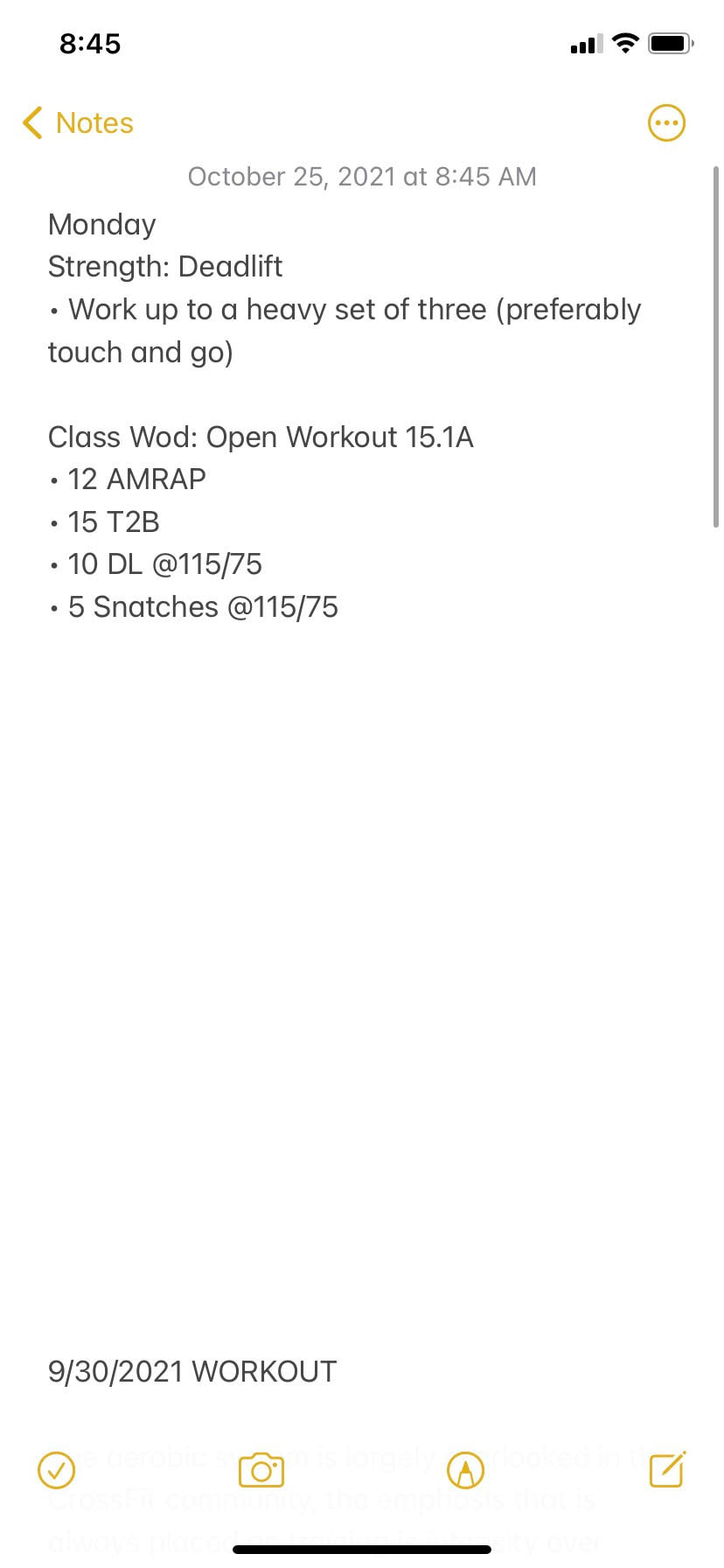
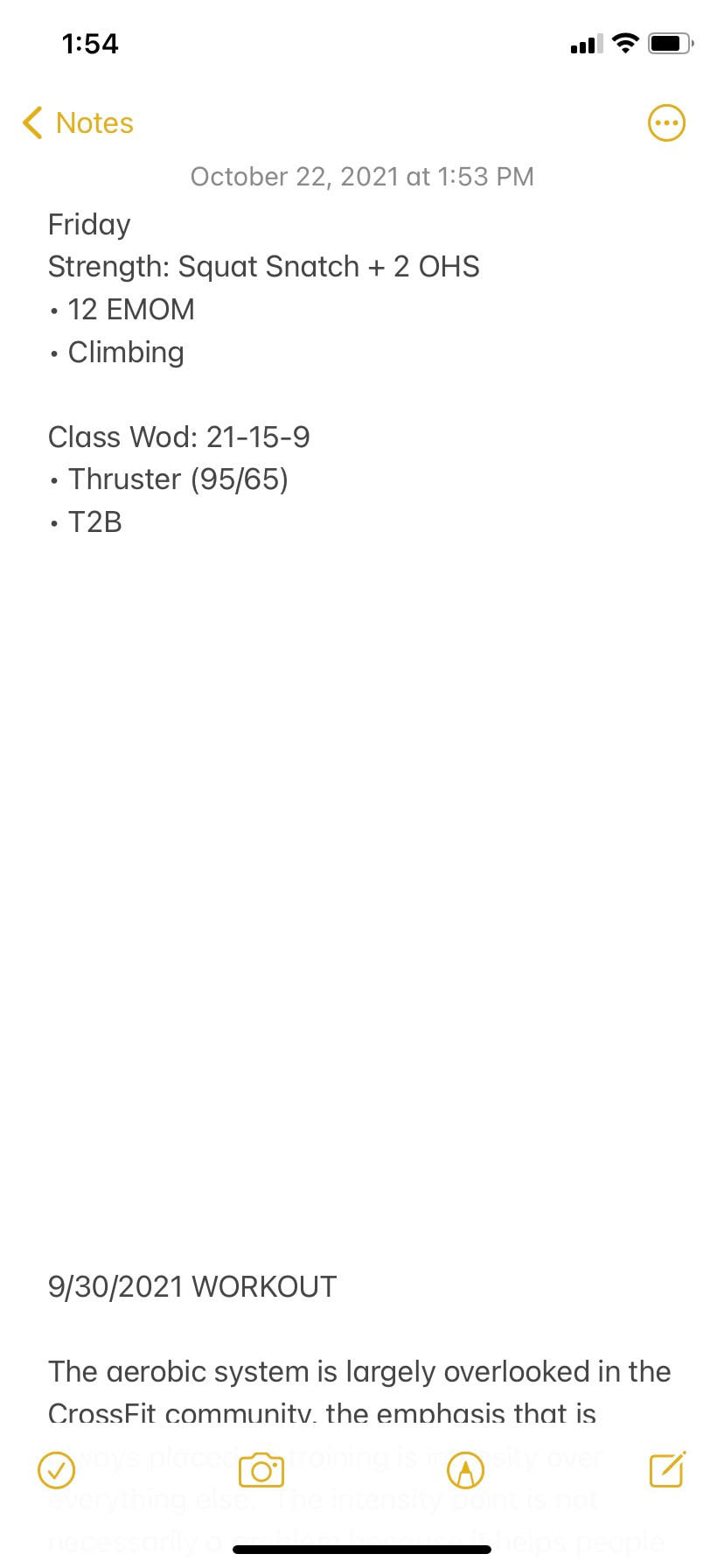
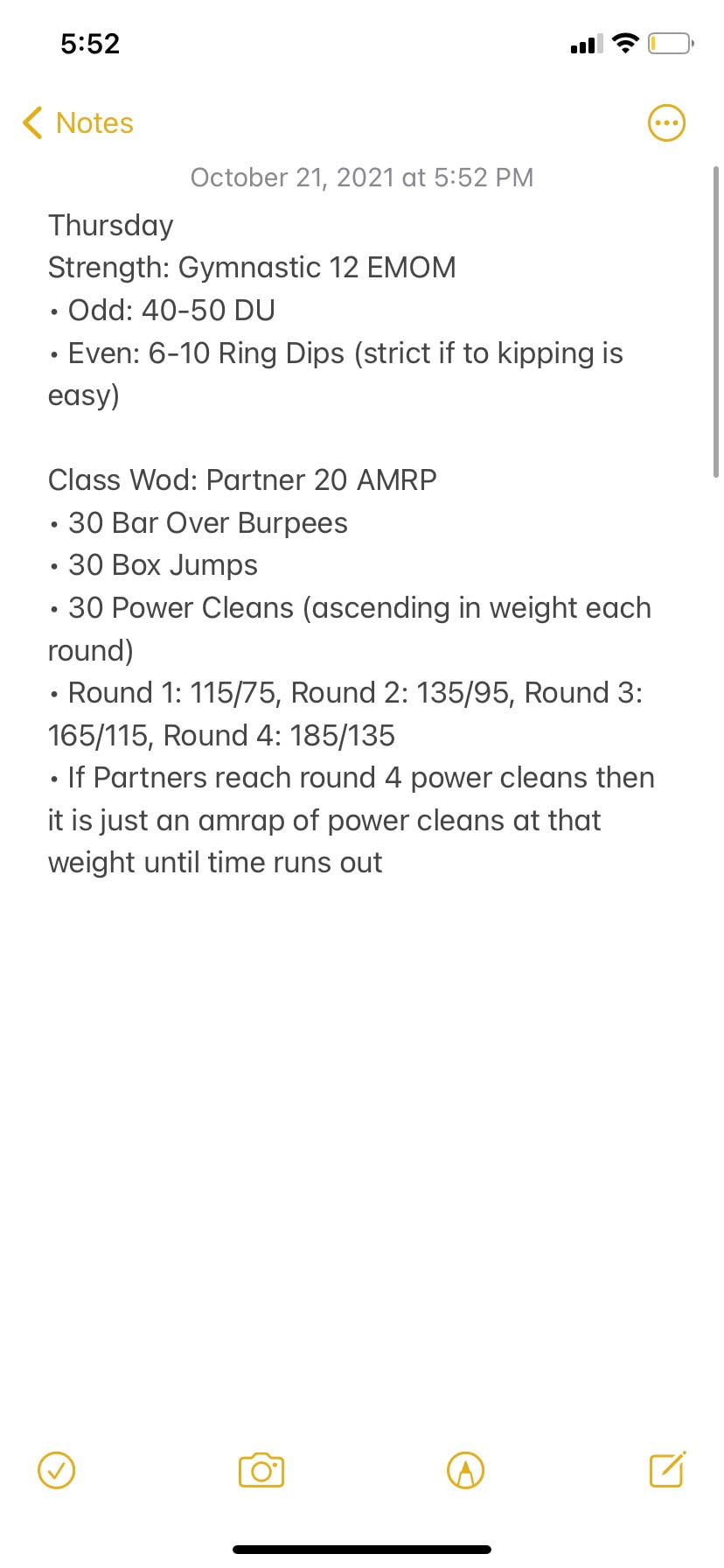
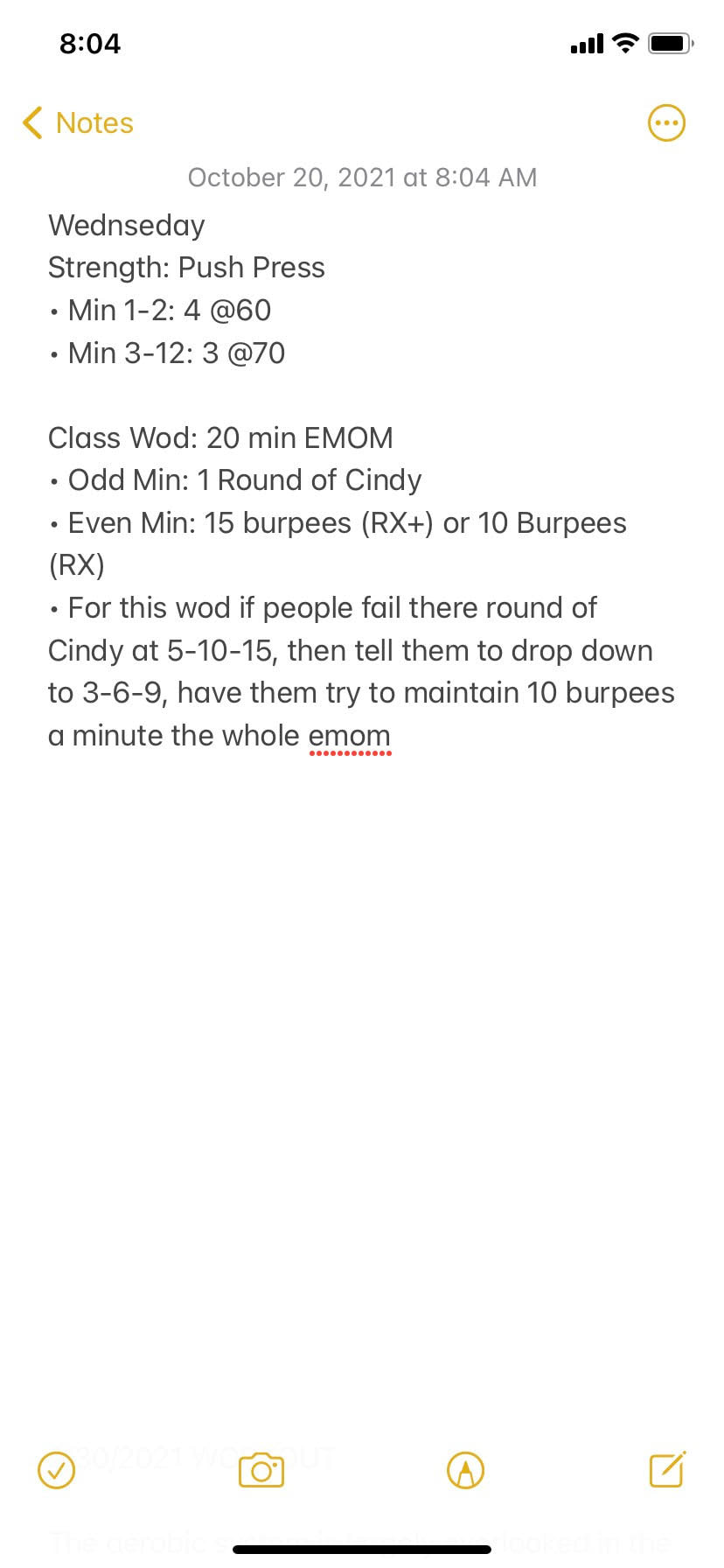
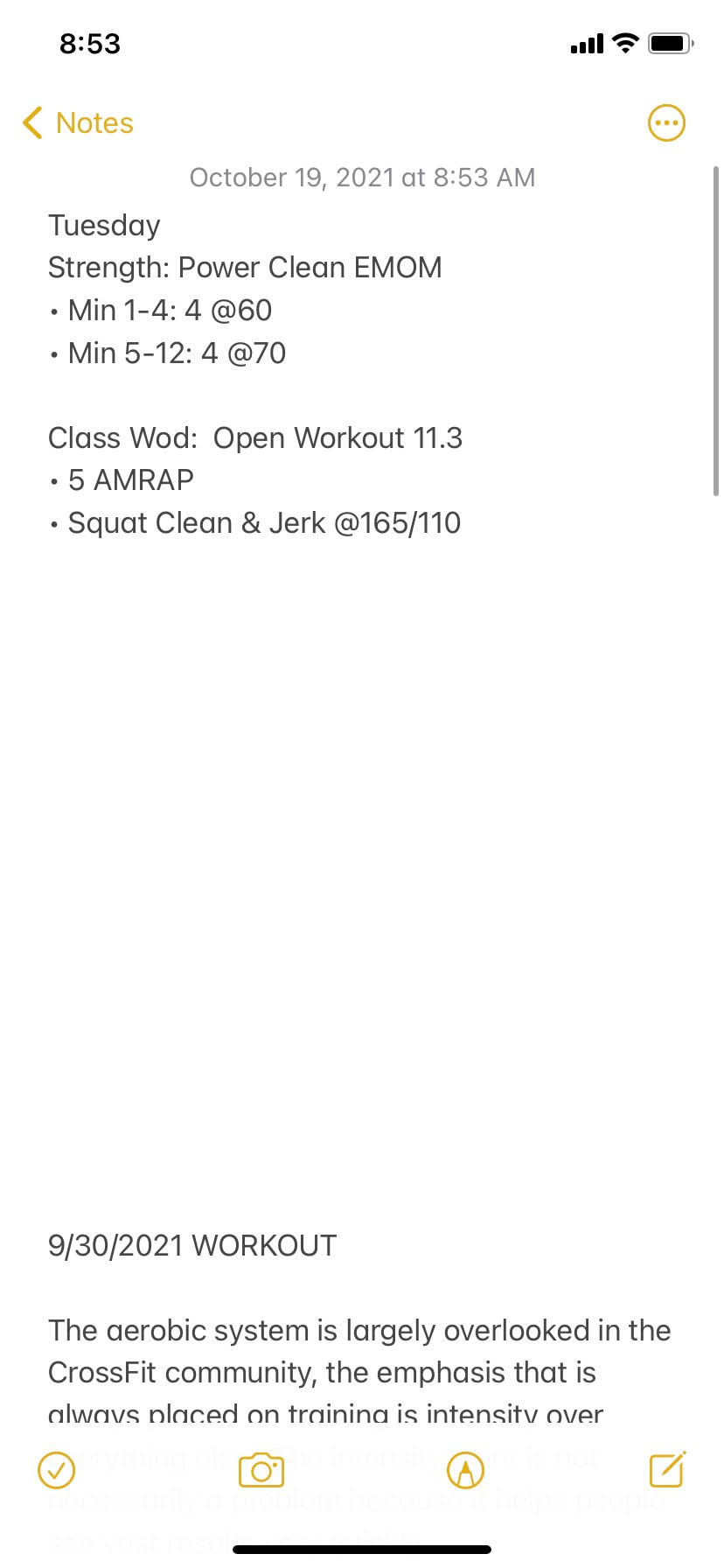
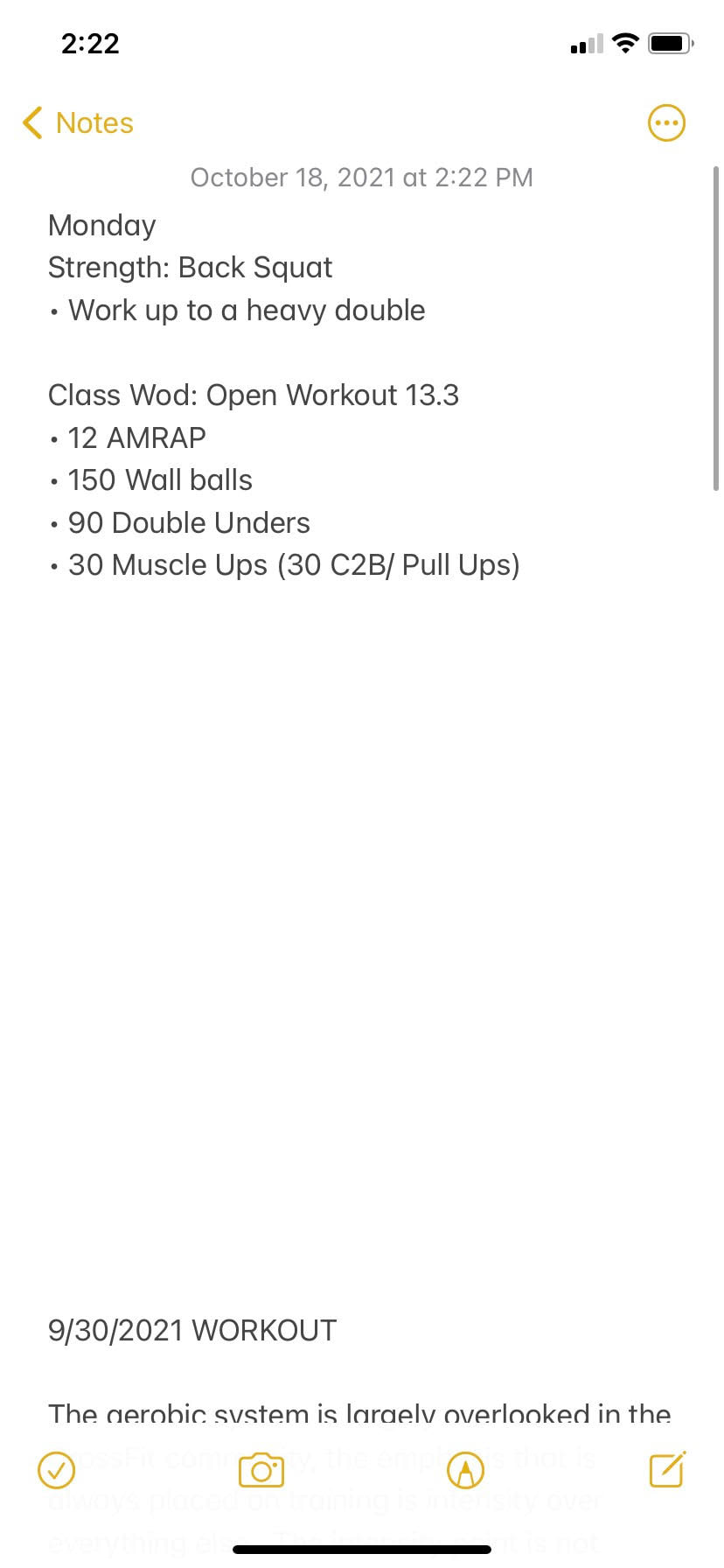
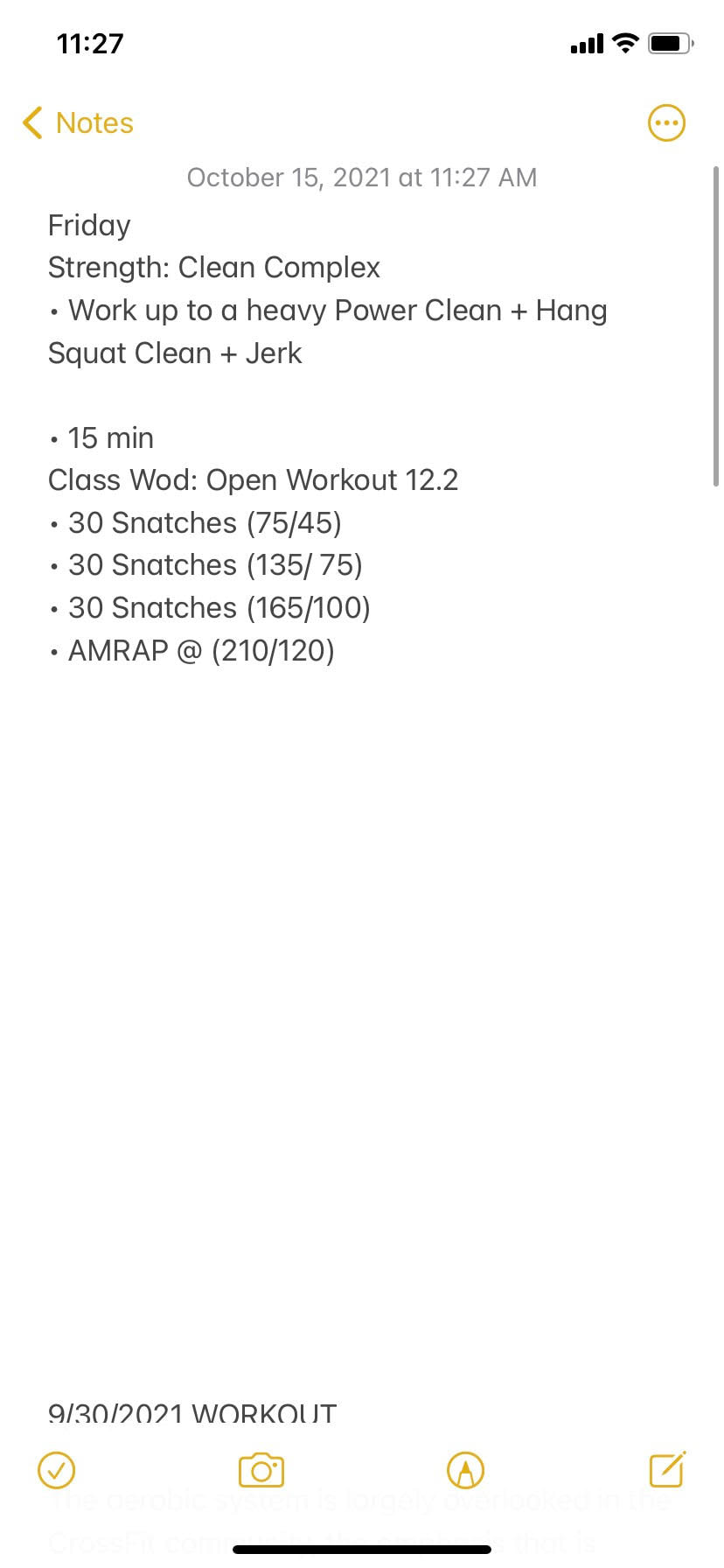
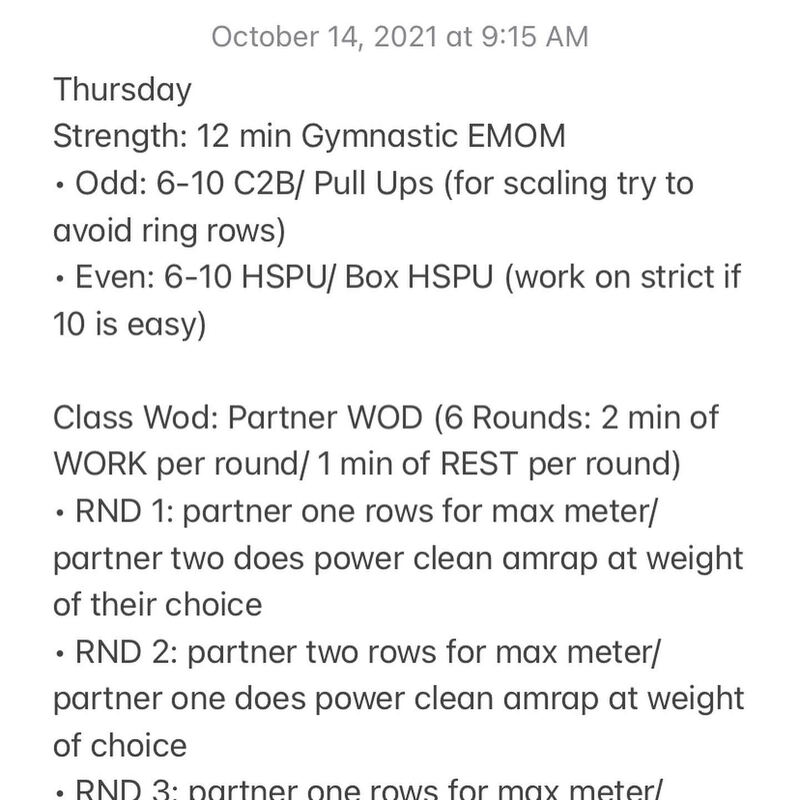
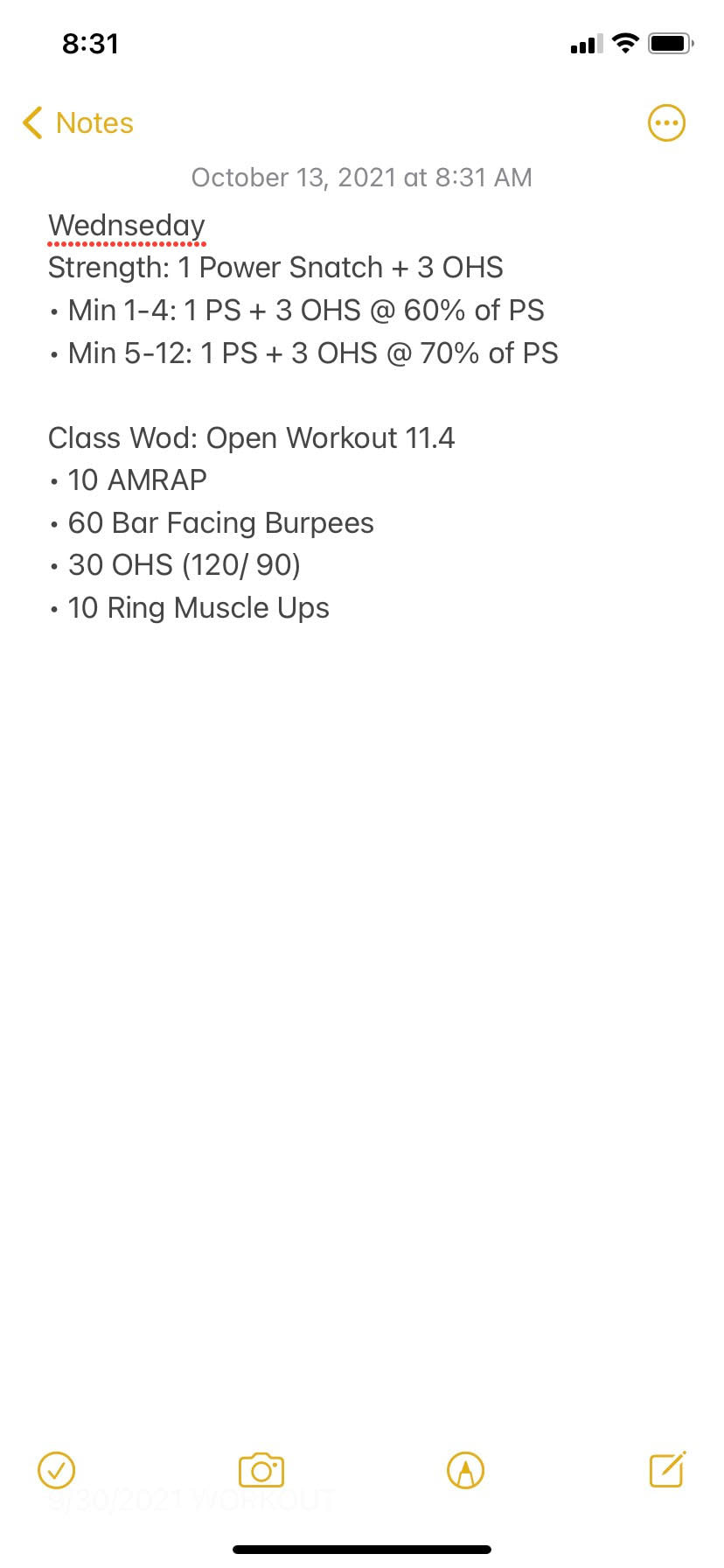
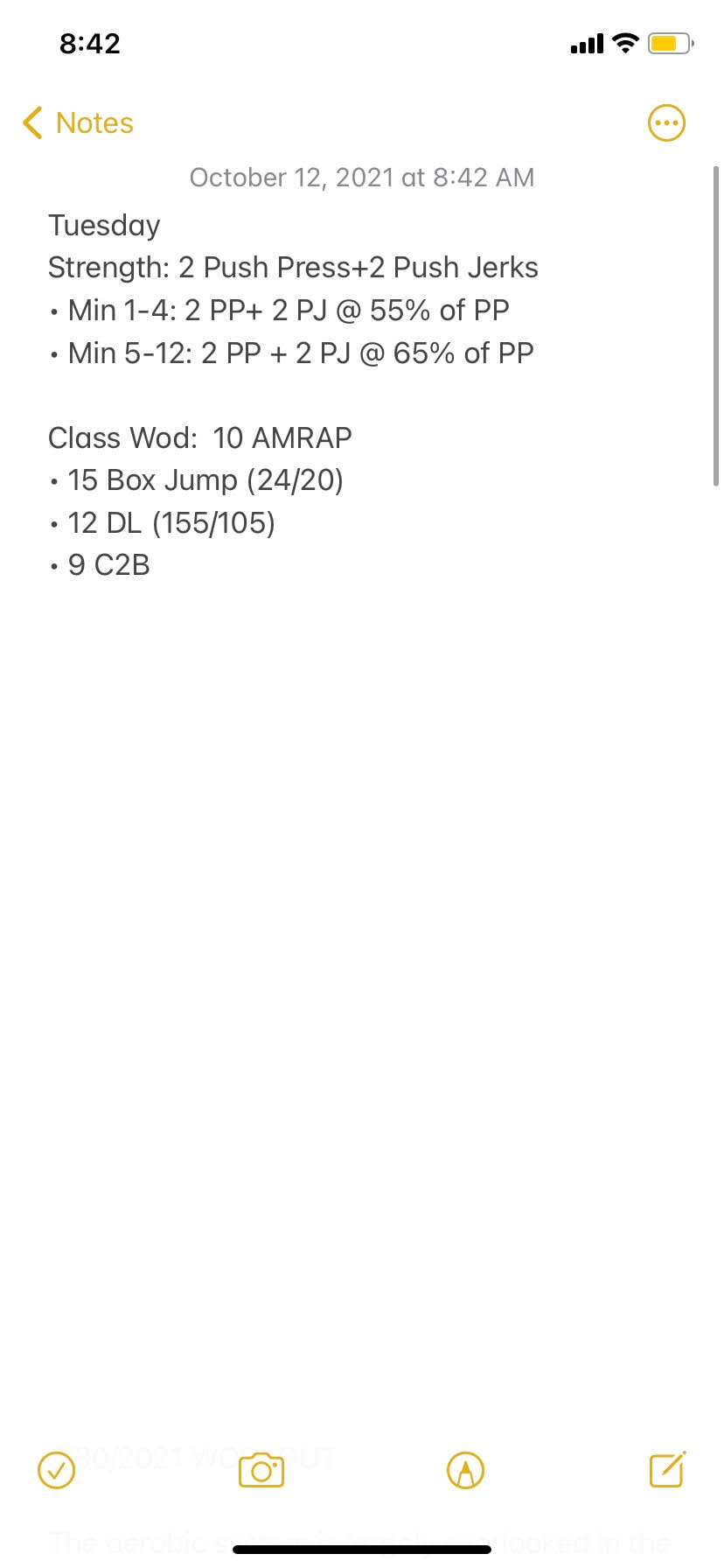
 RSS Feed
RSS Feed